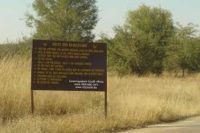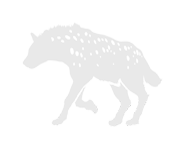
Kruger National Park rest camp safety and rules
Kruger National Park Rest Camps have rules to ensure your safety. This blog explains a bit more of these rules and why they are important to follow.

Ebola is in Africa, but not in South Africa.
Many tourists question if Ebola is a problem in South Africa. This blog will ease your mind. Ebola is in the far west corner of Africa, not in South Africa. You will be safe from this virus if you come to South Africa for a safari, you will not get it here.

Kruger National Park is under threat of Rhino poaching
Kruger National Park is under threat of Rhino poaching, when President Filipe Nyusi (President of Mozanbique) visited Sabie town on Saturday with a message to the local communities to conserve the wildlife in their country, a marauding gang of poachers nearby hunted down one of the country’s prize 12-years-old rhino bulls and butchered the helpless endangered animal’s horn while it was still alive.

Respect Animals well driving thought Kruger National Park
Respect animals when you are driving in the Kruger National Park and keep to the speed limit, because you could accidentally drive over a small creature that you did not see and kill it.

Book your Kruger Park Safari packages before booking a flight
Kruger Park Safari Packages need to be available for your travel dates before booking a flight. To avoid disappointment, make sure to get an early flight on the day you arrive, should you start the safari that same day.

Cape Town Drought and Garden Route Considerations
The Cape Town drought is confined to the city itself. We offer tours along the Beautiful Garden route.

Wild Kruger Park Tours is a Green Company
Wild Kruger Park Tours is a GREEN company. We are trying to have a huge impact on the environment and our natural resources, by going GREEN.

International Plug Converters on an African Safari to charge Cameras and Cell Phones
Having the correct international plug converters to charge camera batteries and cell phones on an African Safari is very important. You do not want to be stuck with a camera that is flat (and being unable to capture that perfect photo) or be in a foreign country without any contact with your family, due to a flat cell phone battery.

Suggested and Affordable Overnight Safari Accommodation in Johannesburg
As long as the overnight accommodation in Johannesburg is located in one of the suburbs of Johannesburg (preferably close to OR Tambo) pick-up can be arranged (except for our Kruger & Sabi Sand Safaris, where you have to stay in one of the suggested hotels or lodges below which are within Sandton Central or around OR Tambo).

Kruger Camping Safari Version 2.0
A Kruger Camping Safari upgraded! Take an amazing Big 5 game safari in Kruger National Park and enjoy camping in style with beds, cooling and electricity.

GSK8T Scateboarding Event 10 September 2016
GSK8T had a Skateboarding Event 10 September 2016 at the Macro parking lot from 10 am - 4 pm. The main aim was to provide a positive influence for the youth of Mpumalanga!

Book a safari long enough in advance to find availability
Due to the popularity of the Kruger National Park and other famous safari destinations in Africa, we would suggest that you book your safari long enough in advance to avoid disappointment of not finding availability.

Assisting the South African youth to make a huge success of their lives
In the late 2000's the director of Kruger Park Tours, Johan Buys and Amareza Buys (his business partner and mother) owned a corporate training company called Pondera Innovation. They contributed to various community projects such as murals and fun day art with orphanages in South Africa a few years before this.

Closest Airports to Kruger National Park
Closest Airports to Kruger National Park and Flight Time Recommendations. Planning a Kruger Park Safari fly in instead of transfers.

Staying inside Kruger or close to the Park
There is always the question "where to stay during our Kruger Park Safari"? Kruger accommodation is usually the recommendation, due to a specific mindset and understanding that this is the only option to be able to see the Big 5 as well as other animals.

Contribution towards the Wildlife Conservation Trust
Contributing toward wildlife is always so touching, especially with regards to saving our animals. Most of these animals become endangered if we as a community don't do everything in our power to safe them and keep them around. Compliments to the Wildlife Conservation Trust.

Whether to fly to Kruger or take a Road Trip
There are so many decisions involved when planning a nice South African Safari, whether to fly to Kruger or take a road trip? When enquiring there's all these little details to keep in mind, and what a tiring process to go through!

Where to go on a Kruger Park Safari
Firstly, the location of Greater Kruger, Sabi Sand and the Kruger Park itself as indicated on the maps above might influence your Kruger Park Safari choice.You might specifically ask for a option like Sabi Sands, but you have to take into account the prices which makes this the most expensive and luxurious option.

Ideas for Excellent Day Tours in Mpumalanga
For the adrenaline and adventure junkies, here are a few exciting ideas for day tours in Mpumalanga: Skyway Trails/Treetop Tours and Zip lining - Experience the fresh air of nature whilst having an exciting adventure and to add to it the beautiful scenery of this picture perfect part of South Africa.

Drought in the Kruger National Park
One of the biggest concerns for Sanparks is the river systems due to water quality and levels. People are however actively involved to restrict water usage (for example irrigation). Some animals do better such as predators do better in these conditions.

Animals to look out for in the rest camps of Kruger National Park on safari
On your visit to the Kruger National park you will find quite a variety of animals right at your doorstep. Below you will see only a few which you will often come across in the Kruger National Park rest camps.

Kruger Mountain and Jock of the Bushveld Route
Embark on a historical exploration by visiting Kruger Country Retreat. We are situated in the Peebles Valley, also known as the Jock of the Bushveld Conservancy. On your stay you will be able to visit one of the Jock of the Bushveld hotspots, awakening the wonderful heart-warming story that still lives on today.

Why is the Kruger National Park so popular?
“Big 5” already give emphasis to this question and generate visitors from all over the world. With approximately 114 different reptile species, 507 bird species and 147 mammal species represented here, it is indeed more than just popular. The Kruger National Park provides endless opportunity and sightings to experience a profound journey of wildlife in South Africa, leaving visitors excited and wanting to come back for more.

Arts and Crafts you can buy on an African Safari
Did you know that these arts and crafts is a traditional and cultural African footprint. On your African safari you will also find that they are made from different materials, such as: Wood, clay, wire, beads, plastic bags, bottle caps, food tins and many more.
